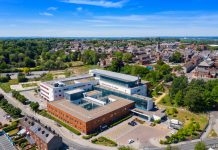Florida Atlantic University and CINVESTAV, Mexico City, conducted a ground-breaking study exploring the effects of long-term running on a network of adult-born neurons
As individuals age, cognitive decline often occurs, impacting crucial brain structures like the hippocampus and adjacent cortices responsible for memory and learning.
Deficiencies in cognitive abilities are associated with reduced hippocampal volume and degradation of synaptic connectivity between the hippocampus and the (peri)-entorhinal cortex.
Florida Atlantic University and CINVESTAV, Mexico City, have studied the effects of long-term running on a network of adult-born neurons in the hippocampus of middle-aged mice.
Running and the preservation of neural connections
These findings from Florida Atlantic University and CINVESTAV, Mexico City shed light on the potential of running to preserve these neurons and prevent or delay age-related memory loss and neurodegeneration.
Adult-born neurons are believed to contribute to memory function and display increased synaptic plasticity during a critical period of three to six weeks of age.
However, it remained unclear whether neurons born in early adulthood remain integrated into neural networks and if their circuitry can be modified through physical activity in middle age.
To answer these questions, researchers used a unique rabies virus-based circuit tracing approach, examining the neural circuitry of adult-born neurons in middle-aged rodents months after initial labeling.
The profound benefits of long-term exercise on the aging brain
The study, published in the journal eNeuro, revealed that long-term running establishes connections among “old” adult-born neurons born in early adulthood, forming a network crucial for the maintenance of episodic memory encoding during aging.
‘We show that running also substantially increases the back-projection from the dorsal subiculum onto old adult-born granule cells’
Henriette van Praag, Ph.D., an associate professor at FAU’s Schmidt College of Medicine and a member of the FAU Stiles-Nicholson Brain Institute, emphasized the profound benefits of long-term exercise on the aging brain.
“We show that running also substantially increases the back-projection from the dorsal subiculum onto old adult-born granule cells,” adds van Praag.
“This connectivity may provide navigation-associated information and mediate the long-term running-induced improvement in spatial memory function.”
The study showed that long-term running not only increased the number of adult-born neurons but also enhanced the recruitment of presynaptic (sub)-cortical cells to their network.

What is pattern separation ability?
Carmen Vivar, Ph.D., from the Department of Physiology, Biophysics, and Neuroscience at Centro de Investigacion y de Estudios Avanzados del IPN in Mexico, highlighted that long-term running might improve pattern separation ability, which is closely linked to adult neurogenesis.
Vivar explains, “Long-term running may enhance pattern separation ability, our ability to distinguish between highly similar events and stimuli, a behavior closely linked to adult neurogenesis, which is among the first to display deficits indicative of age-related memory decline.”
Pattern separation ability plays a crucial role in distinguishing similar events or stimuli
Pattern separation ability plays a crucial role in distinguishing similar events or stimuli and is among the first cognitive functions to show deficits indicative of age-related memory decline.
Furthermore, the study demonstrated that running not only rescued perirhinal connectivity but also increased the contribution of the entorhinal cortices to the network of old adult-born neurons.
This enhanced connectivity, including the back-projection from the dorsal subiculum, may provide navigation-associated information and mediate the improvement of spatial memory function induced by long-term running.
In conclusion, the study emphasizes the importance of chronic exercise, starting in young adulthood and continuing throughout middle age, for maintaining memory function during the aging process.
It underscores the relevance of including exercise in our daily lives to preserve cognitive health and enhance memory performance as we grow older.











